Themed collection Unimolecular reactions

Preface
Dr Struan H. Robertson introduces the Faraday Discussion on unimolecular reactions, held in Oxford during June 2022, 100 years after the publication of the Faraday Discussion where Lindemann proposed collisions as the mechanistic basis behind unimolecular reactions.
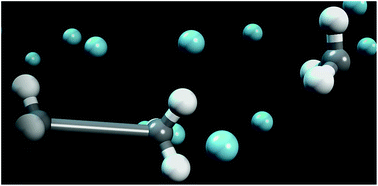
Faraday Discuss., 2022,238, 9-10
https://doi.org/10.1039/D2FD90045A
Concluding remarks: Faraday Discussion on unimolecular reactions
100 years after Lindemann, advances in prediction and measurement of reactions are summarized. Needed next steps, including extensions to liquid phase, are highlighted.

Faraday Discuss., 2022,238, 741-766
https://doi.org/10.1039/D2FD00136E
Improved microcanonical instanton theory
We develop a microcanonical version of instanton theory for studying deep tunnelling reactions under the statistical assumptions of RRKM. The new theory provides a correction to the theory of Chapman, Garrett and Miller for non-separable systems.

Faraday Discuss., 2022,238, 204-235
https://doi.org/10.1039/D2FD00063F
Spiers Memorial Lecture: Theory of unimolecular reactions
The historical and continuing advances in our understanding of unimolecular reaction dynamics have arisen from the synergy between improvements in experimental measurements and in theoretical methodologies.

Faraday Discuss., 2022,238, 11-67
https://doi.org/10.1039/D2FD00125J
Dissociation-induced depletion of high-energy reactant molecules as a mechanism for pressure-dependent rate constants for bimolecular reactions
We demonstrate a significant mechanism for pressure dependence of bimolecular reactions that has not historically been considered: high-energy reactants are depleted by unimolecular dissociation and not available to undergo bimolecular reaction.
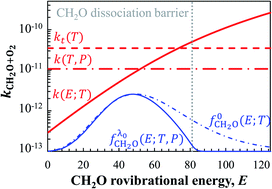
Faraday Discuss., 2022,238, 355-379
https://doi.org/10.1039/D2FD00054G
Rotational energy transfer kinetics of optically centrifuged CO molecules investigated through transient IR spectroscopy and master equation simulations
Rotational energy transfer of optically centrifuged CO is investigated with high-resolution transient IR absorption probing and master equation modeling. Observed rates are smaller than simulated rates, highlighting the role of angular momentum in collisional relaxation.
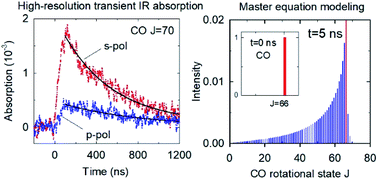
Faraday Discuss., 2022,238, 87-102
https://doi.org/10.1039/D2FD00068G
Improved computational modeling of the kinetics of the acetylperoxy + HO2 reaction
New quantum chemical and statistical rate theory calculations predict branching fractions for the acetylperoxy + HO2 reaction in fair to good agreement with recent experiment.
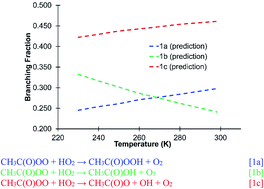
Faraday Discuss., 2022,238, 589-618
https://doi.org/10.1039/D2FD00030J
Stereoisomer-dependent unimolecular kinetics of 2,4-dimethyloxetanyl peroxy radicals
The unimolecular decomposition of 2,4-dimethyloxetane peroxy radicals is a competition between conventional and ring opening pathways controlled by stereochemistry.
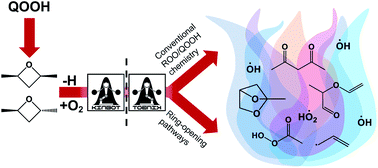
Faraday Discuss., 2022,238, 295-319
https://doi.org/10.1039/D2FD00029F
Electron-induced dissociation dynamics studied using covariance-map imaging
Electron ionisation is a fundamental ionisation process that often leads to unimolecular dissociation. Velocity-map and covariance-map imaging experiments provide detailed insight into the often complex dissociation dynamics.
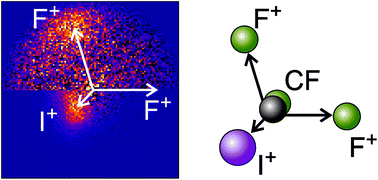
Faraday Discuss., 2022,238, 682-699
https://doi.org/10.1039/D2FD00033D
Theoretical studies on Lennard-Jones parameters of benzene and polycyclic aromatic hydrocarbons
Lennard-Jones self-collision diameters of benzene and PAHs derived from different methods.
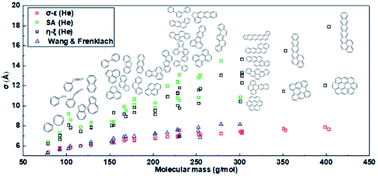
Faraday Discuss., 2022,238, 103-120
https://doi.org/10.1039/D2FD00058J
Modelling reaction kinetics of distonic radical ions: a systematic investigation of phenyl-type radical addition to unsaturated hydrocarbons
We measure second-order rate coefficients for a suite of radical-ion reactions involving unsaturated hydrocarbons (C2H2 and C2H4), and report our efforts to develop an accurate modelling framework using a Rice–Ramsperger–Kassel–Marcus theory Master Equation approach.
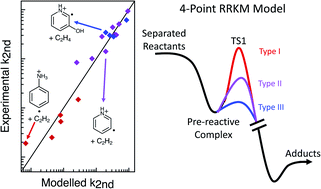
Faraday Discuss., 2022,238, 475-490
https://doi.org/10.1039/D2FD00045H
The unimolecular decomposition of dimethoxymethane: channel switching as a function of temperature and pressure
The channel branching between the unimolecular decomposition steps of dimethoxymethane is analyzed with a multichannel master equation.
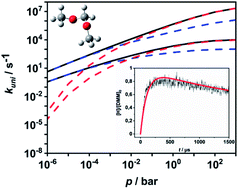
Faraday Discuss., 2022,238, 665-681
https://doi.org/10.1039/D2FD00039C
Crossed-beam and theoretical studies of multichannel nonadiabatic reactions: branching fractions and role of intersystem crossing for O(3P) + 1,3-butadiene
The O(3P) + 1,3 C4H6 reaction is studied through non adiabatic AITSTME simulations and CMB experiments. The main reaction channels are HCO + C3H5, CO + C3H6, H2CO + C3H4, and H + C4H5O. Temperature dependent rates are then theoretically determined.
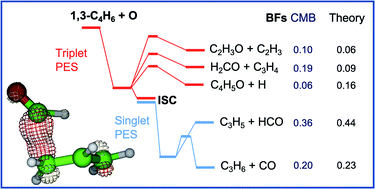
Faraday Discuss., 2022,238, 161-182
https://doi.org/10.1039/D2FD00037G
Examining the accuracy of methods for obtaining pressure dependent rate coefficients
In this work we benchmark the performance of various methods for obtaining pressure-dependent phenomenological rate coefficients against direct numerical simulations and propose a new method called simulation least-squares.
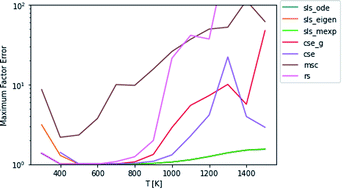
Faraday Discuss., 2022,238, 380-404
https://doi.org/10.1039/D2FD00040G
Unimolecular isomerisation of 1,5-hexadiyne observed by threshold photoelectron photoion coincidence spectroscopy
The unimolecular isomerisation of the propargyl + propargyl “head-to-head” adduct, 1,5-hexadiyne to fulvene and benzene via 3,4-dimethylenecyclobut-1-ene (all C6H6) was studied in the high-pressure limit by threshold photoelectron spectroscopy.

Faraday Discuss., 2022,238, 645-664
https://doi.org/10.1039/D2FD00028H
The merit of pressure dependent kinetic modelling in steam cracking
Modelling case study on the role of pressure dependence in single event kinetic modelling for steam cracking of both ethane and propane. Results are validated with in-house generated experimental data.
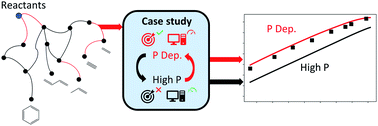
Faraday Discuss., 2022,238, 491-511
https://doi.org/10.1039/D2FD00032F
Quantum resonances and roaming dynamics in formaldehyde photodissociation
Product HCO rovibrational levels that are near-coincident with prepared rovibrational levels in H2CO mediate roaming resonances that impact the roaming, tight-TS and radical yield.

Faraday Discuss., 2022,238, 249-265
https://doi.org/10.1039/D2FD00050D
Unimolecular dissociation dynamics of electronically excited HCO(Ã2A′′): rotational control of nonadiabatic decay
The photoinduced unimolecular decay of the electronically excited HCO(Ã2A′′) is investigated in a combined experimental–theoretical study.

Faraday Discuss., 2022,238, 236-248
https://doi.org/10.1039/D2FD00011C
Predicting third-body collision efficiencies for water and other polyatomic baths
A priori theory quantitatively predicts pressure-dependent kinetics for polyatomic and diatomic bath gases.

Faraday Discuss., 2022,238, 68-86
https://doi.org/10.1039/D2FD00038E
Mechanism, thermochemistry, and kinetics of the reversible reactions: C2H3 + H2 ⇌ C2H4 + H ⇌ C2H5
A combination of high-level coupled cluster theory, Active Thermochemical Tables, and master-equation simulations is used to study the reversible reactions: C2H3 + H2 ⇌ C2H4 + H ⇌ C2H5.

Faraday Discuss., 2022,238, 405-430
https://doi.org/10.1039/D1FD00124H
An experimental and computational study of the reaction between pent-3-en-2-yl radicals and oxygen molecules: switching from pure stabilisation to pure decomposition with increasing temperature
The phenomenological descriptions of complicated R + O2 ↔ RO2 → products reaction systems simplify significantly under pre-equilibrium conditions.
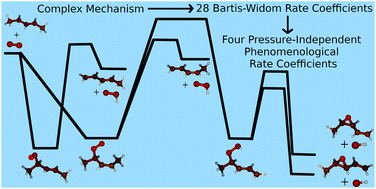
Faraday Discuss., 2022,238, 619-644
https://doi.org/10.1039/D2FD00031H
Influence of second-order saddles on reaction mechanisms
We investigated the role of second-order saddle points on the dynamics of the thermal denitrogenation of 1-pyrazoline using ab initio classical trajectory simulations at the CASSCF(4,4)/6-31+G* level of theory.
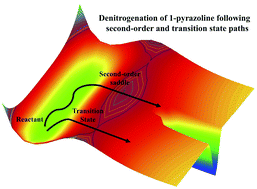
Faraday Discuss., 2022,238, 183-203
https://doi.org/10.1039/D2FD00026A
Energy-resolved and time-dependent unimolecular dissociation of hydroperoxyalkyl radicals (˙QOOH)
Unimolecular decay of infrared activated hydroperoxyalkyl radicals (˙QOOH) observed via time-resolved appearance of OH radical products.

Faraday Discuss., 2022,238, 575-588
https://doi.org/10.1039/D2FD00008C
Statistical theory for the reaction N + OH → NO + H: thermal low-temperature rate constants
A statistical treatment of the reaction N + OH → NO + H is developed to characterize the redissociation processes by a state-specific criterion.
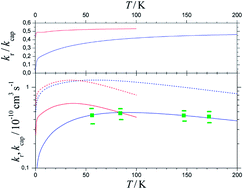
Faraday Discuss., 2022,238, 144-160
https://doi.org/10.1039/D2FD00018K
Cleavage of an aromatic ring and radical migration
Reaction-rate analysis of thermal ring cleavage in sooting flames shows that it can be comparable in rate to oxyradical decomposition and that fast internal ring radical migration is comparable in frequency to reaction events of aromatic growth.
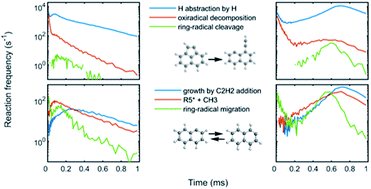
Faraday Discuss., 2022,238, 512-528
https://doi.org/10.1039/D2FD00012A
Master equation modelling of non-equilibrium chemistry in stellar outflows
We show that, in the very low pressure regime of a stellar outflow, molecules can exhibit significant vibrational disequilibrium because optical transitions occur on a faster timescale than collisions; this profoundly affects their reaction kinetics.
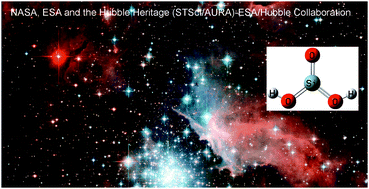
Faraday Discuss., 2022,238, 461-474
https://doi.org/10.1039/D2FD00025C
Probing the dynamics of the photo-induced decarboxylation of neutral and ionic pyruvic acid
Combined advanced ab initio treatments and experiments reveal that the pyruvic acid cation decomposes to mostly form HOCO, in contrast to the photodynamics of electronically excited pyruvic acid being dominated by decarboxylation.

Faraday Discuss., 2022,238, 266-294
https://doi.org/10.1039/D2FD00023G
Master equation study of hydrogen abstraction from HCHO by OH via a chemically activated intermediate
A new extension of the TUMME master-equation program is used to explore the time evolutions of the concentrations of the OH radical and the reaction complex under pseudo-first-order conditions.

Faraday Discuss., 2022,238, 431-460
https://doi.org/10.1039/D2FD00024E
Impact of Lindemann and related theories: general discussion
Faraday Discuss., 2022,238, 700-740
https://doi.org/10.1039/D2FD90051C
The reaction step: general discussion
Faraday Discuss., 2022,238, 320-354
https://doi.org/10.1039/D2FD90049A
The master equation: general discussion
Faraday Discuss., 2022,238, 529-574
https://doi.org/10.1039/D2FD90050E
Collisional energy transfer: general discussion
Faraday Discuss., 2022,238, 121-143
https://doi.org/10.1039/D2FD90048C
About this collection
We are delighted to share with you a selection of the papers associated with a Faraday Discussion on Unimolecular reactions. More information about the related event may be found here: http://rsc.li/unimolecular-fd2022. Additional articles will be added to the collection as they are published. The final versions of all the articles presented and a record of the discussions will be published after the event.
Gas phase unimolecular reactions are central to the complex chemistry of numerous processes, such as those occurring in the atmospheres of Earth and other planets, combustion for transportation and power generation, and industrial manufacturing of advanced chemicals and materials. Improved understanding of the fundamental chemistry of these processes is a pressing concern not only in the context of atmospheric pollution and climate change, but also designing more efficient industrial processes and fuels that can help attenuate this impact. In this Discussion we will examine the current state of unimolecular reaction experiment and theory, with an emphasis on application to contemporary challenges, such as atmospheric pollution, the search for alternative fuels and the better understanding of industrial processes. This meeting will cover 4 main themes: Collisional energy transfer, The reaction step, The Master Equation and the Impact of Lindemann and related theories.
On behalf of the Scientific Committee, we hope you join us and participate in this exciting event, and that you enjoy these articles and the record of the discussion.